
Mechanism of Action and Pharmacokinetics Decanoate Nadrolone
The pharmacologically active substance is nandrolone. The decanoate ester provides the preparation with a duration of action of approximately 3 weeks after injection. Nandrolone is chemically related to the male hormone.
Compared to testosterone, it has an accentuated anabolic activity and a reduced androgenic activity. This has been demonstrated in animal bioassays and clarified by receptor binding studies. The low androgenicity of nandrolone is confirmed by clinical use.
Nandrolone decanoate has been shown to positively influence calcium metabolism and increase bone mass in osteoporosis. In women with disseminated breast carcinoma, it has been reported to produce objective regressions for many months. In addition, nandrolone has a nitrogen-saving action.
This effect on protein metabolism was proven in metabolic studies and is therapeutically used in states where there is a protein deficit such as during chronic debilitating diseases and after major surgery and severe trauma.
In these states, nandrolone serves as a support adjunct in specific treatments and dietary measures, as well as parenteral nutrition.
At the recommended doses, the androgenic effects (for example: virilization) are relatively rare. Nandrolone lacks the C-17 alpha-aquyl group that is associated with the onset of liver dysfunction and cholestasis.
Nandrolone decanoate is slowly released from the injection site into the blood with a half-life of 6 days. In blood, the ester is rapidly hydrolyzed into nandrolone with a half-life of one or less.
The half-life for the combined hydrolysis process of nandrolone decanoate and the distribution and elimination of nandrolone is 4.3 hours.
Nandrolone is metabolized by the liver.
The substances 19-norandrosterone, 19 noretocolanolone and 19 norepiandrosterone have been identified as metabolites in the urine. It is not known if these metabolites have any pharmacological action.
Indications
Stimulant of protein anabolism.
Osteoporosis.
For the palliative treatment of selected cases of disseminated breast carcinoma in women.
As an adjunct in specific therapeutics and dietary measures in pathological conditions characterized by a negative nitrogen balance.
Note: For an optimal therapeutic effect it is necessary to administer adequate amounts of vitamins, minerals and proteins in a diet rich in calories.
Osteoporosis.
For the palliative treatment of selected cases of disseminated breast carcinoma in women.
As an adjunct in specific therapeutics and dietary measures in pathological conditions characterized by a negative nitrogen balance.
Note: For an optimal therapeutic effect it is necessary to administer adequate amounts of vitamins, minerals and proteins in a diet rich in calories.
Posology
It must be administered by deep intramuscular injection.
Osteoporosis: 50 mg Every 3 weeks.
Palliative treatment in selected cases with disseminated breast carcinoma in women: 50 mg. Every 2-3 weeks.
As an adjunct in specific therapeutics and dietary measures in pathological conditions characterized by a negative nitrogen balance:
20-50 mg Every 3 weeks.
Contraindications
Pregnancy. Prostate carcinoma or known or suspected breast carcinoma in men. This medicine is contraindicated during pregnancy because of the possibility of masculinization of the fetus. There are insufficient data on the use of this medicine during breastfeeding to establish potential harm to the baby or a possible influence on milk production.
Precautions and Warnings (in relation to effects of carcinogenesis, mutagenesis, teratrogenesis and on fertility).
If signs of virilization develop, discontinuation of treatment should be considered, preferably after consulting the patient.
It is recommended to monitor patients with any of the following conditions.
Latent or manifest heart failure, renal dysfunction, hypertension or migraine (or history of these conditions) since anabolic steroids may include fluid retention.
Incomplete natural growth since anabolic steroids at high doses can accelerate epiphyseal closure.
Skeleton metastasis or breast carcinoma. In these patients, hypercalcemia can develop spontaneously in both cases and as a result of anabolic steroid therapy. The latter may be indicative of a positive tumor response to hormonal treatment.
However, hypercalcemis must first be treated properly and then resume hormonal therapy, once normal calcium levels have been restored.
Liver failure.
The misuse of anabolic steroids to improve the ability and sports brings serious health risks, so it should be discouraged.
Adverse reactions
High doses, prolonged treatment and / or too frequent administration may cause:
Virilization manifested in sensitive women in the form of hoarseness, acne, hirsutism and increased libido; in boys before puberty, in the form of an increase in the frequency of erections and phallic thickening and in girls as an increase in pubic hair and clitoral hypertrophy. Hoarseness may be the first symptom of a vocal change that can lead to sometimes irreversible redness of the voice.
Amenorrhea
Inhibition of spermatogenesis.
Premature epiphyseal closure.
Fluid retention.
Restrictions of Use
The toxicity of nandrolone decanoate in animals is very low.
There are no reports of acute overdosing with nandrolone in humans.
Overdose
Treatment in case of overdose: There have been no reports of overdose with the product.


أعدت للمنشطات دو
برج ليوا بوكس أبو ظبي
Liwa Tower P.O.
Box 904 Abu Dhabi
(9712) 6131 432
